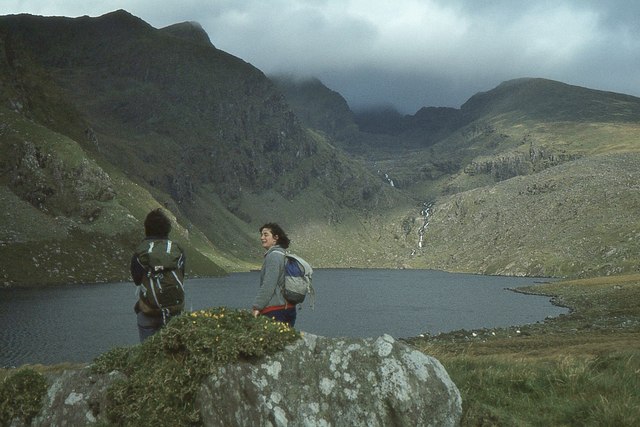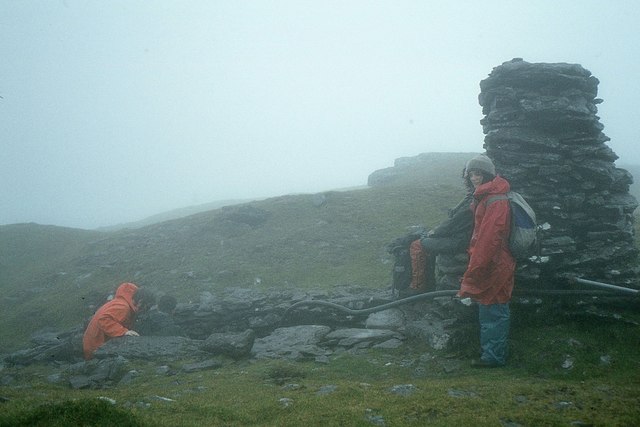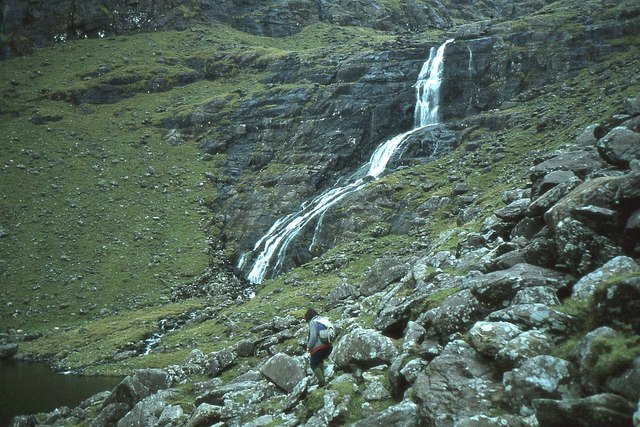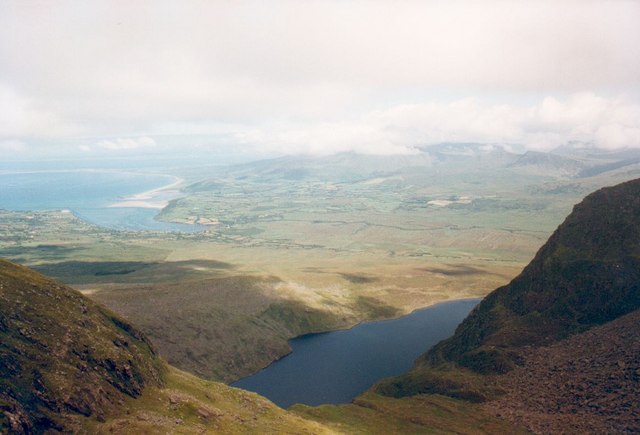![]()
![]()
Dingle 1966
DINGLE EXPEDITION 1966
Leader John Houghton
Members
Martin Ashton, Tom Bragg, John Lace, James Norman, Terry Samuel, David Wrigley, Nick Yates.
|
LEADERS REPORT Plans for the Dingle Expedition only really begun to take shape at the Christmas conference in Derby, where it was agreed that an expedition organised by members of Society other than officers, directors or the Hon. Chairman would provide problems of organisation and responsibility similar to those undertaken on Rhum in 1959. It would therefore be an ideal form of training for prospective officers on expeditions to come, as well as being a change in both substance and situation from those of previous years.
It was decided that the party should consist of 11 Society members, all having been on Harris in 1965. This number was later reduced to 8 with John Proctor doing V.S.O., Simon Rogers being ill, and John Brooks going to Colonsay. A fortnight suiting all was chosen, and an approximate area for the site selected on the north coast of the Dingle peninsula, about 1 mile south of Brandon Point. Nick Yates chose to supply maps of the area and to find contacts who might provide the necessary information about the camp site, bouts and fishing; John Lace undertook the tusk of keeping accounts, arranging all financial aspects of the expedition, and ordered a marquee and lat. requirements from Dublin; David Wrigley hired Calor equipment from Dingle and Dublin, and Tom Bragg made out a menu (assuming a great appetite for "Marietta” biscuits, sugar, and condensed milk), and ordered stores from a wholesaler in Tralee. Finally, Martin Ashton arranged for 3 people to travel from Fishguard to Rosslare, and for the remaining 5 to sail from Liverpool to Dublin. A meeting was held at John Houghton's house to decide upon final arrangements, and who should bring such articles as tilley lamps, kitchen knives, dolly mops, and fly-sprays.
After a great deal of paper-work, the expedition finally got under way, and we all met at Tralee station: we left for the camp site almost immediately as Tom and Martin had arrived the day before to arrange the transport of stores. The tents were pitched on a well drained stretch of grass just above a sandy beach facing north. We were sheltered (or so we thought) by spectacular and beautiful mountains to the south and west, with Brandon Mountain rising to over 3,000 ft.
The camp consisted of the marquee for stores, equipment, cooking, eating and sleeping 2, an Icelandic ridge tent sleeping 4, a bivvi tent sleeping 2, and a lat. tent. No driftwood was available for "furniture" so stones from the beach were piled up to make seats. Medical equipment was put under the charge of Pseud, whose speciality the "neck of life" we were unfortunately unable to witness, but whose skill in treating a cut toe made us realise we were in safe hands. Fresh eggs, milk, and bread, could be bought locally when necessary, and water came from our landlord's farm, half mile away.
During the first week cloudy but warm weather facilitated walks to explore the area. Deelick Point was reached with the use of ropes, and Wriggles heard the legendary pipers from the submerged village in Sauce Creek, while a party was spending the night there under canvas. Hopes to pass the above off as a hermit in St. Brendan's Oratory on the summit of Brandon Mountain were dashed by the discovery that it was an altar rather than a stone hut, but a walk to Loch Cruttia offered a little encouragement to the fishermen, though they later discovered they had fished the wrong side.
|
|
 |
 |
|
Lough Guttia, Brandon 1978 © Copyright Jim Barton |
Remains of St Brendan's oratory, Brandon 1978 © Copyright Jim Barton |
|
Projects got off to a reasonable start, and ranged from ornithology, geology, and sociology to leprechaun hunting and the designs of a certain "Romeo Samuels", the results of whose exploits will not appear in print. Sociology in Brandon showed considerable possibilities, as the locals were extremely friendly and helpful, and the village had an interesting history. Bird life was fairly varied without anything exceptionally unusual. A possible geographical survey was set back by Simon Rogers being unable to come.
It was just as these projects were showing considerable promise that the gales came, at the end of the first week. Gusts of what cannot have been more than Force 7 made short work of the rather doubtful-looking marquee roof, causing 2 rips over 10 ft. long, and then flattening the whole tent. Stores were transferred to an extra bivvi tent, and cooking and eating quarters to the lat. tent (6 ft. by 6 ft.!). Further gales of up to Force 9 made the re-pitching of 2 tents necessary, and succeeded in snapping 2 tent-poles. Thus 4 days were spent either reorganising camp, keeping the tents up, or recovering from the night watches. However, the final 3 days were fine, so camp was struck without trouble.
Our sincere thanks to James Greaney for our excellent site, and for our water supply—I hope we picked enough onions for him in exchange—also to Sean O'Neill and his minibus, and to Paddy O'Sullivan and his car and trailer, for providing transport from Tralee to the site. Finally to Johnny Fitz(gerald) for his excellent Guinness, his untiring answers to our endless questions, and his suggestions as to where we could take Martin for a hair-cut! These and all members of the party itself all contributed a great deal to make this essentially democratic expedition a great success. I hope a similar one will be possible next year. John Houghton |
|
 |
 |
|
Waterfall below Lough Nalacken, Brandon 1978 © Copyright Jim Barton |
Brandon Peak eastern corrie 1996. © Copyright Gordon Hatton |
| From an
e-mail from Tom Bragg 22/06/2015 I was on the ‘66 expedition to Dingle: 8 of us organised our own “expedition” (no officers!) to camp in Brandon Village. I was in charge of food supplies: ordered from a cash & carry in Tralee, including lots of catering-size tins of baked beans. Tom contributed memories and photos for Harris '65 and '67 |
|